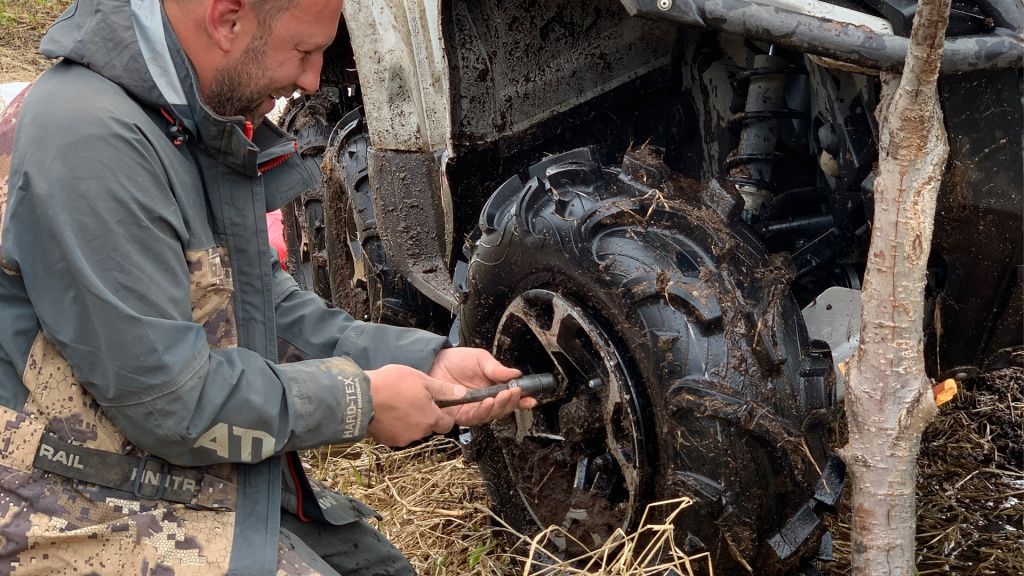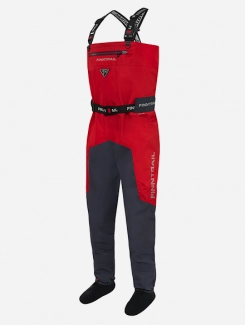How to Extend the Life of Your ATV
ATVs are expensive machines that you'll be relying on for both fun and safety. It's wise to take good care of them. This post will empower you with the knowledge to protect your ride and your investment with proper ATV maintenance.

WHAT YOU NEED TO KNOW ABOUT ATV MAINTENANCE
ATVs take a lot more punishment than a car, so they require more maintenance. It's not hard to learn how to take care of your ATV. You just have to be mindful to learn and make it routine.
You will be performing routine maintenance after a certain number of riding hours or over a space of time just like you do with your car. There is also maintenance you need to perform before and after every single ride.
Expert tip: keeping up with ATV riding hours in your mind is tricky. You might want to keep a log of each time you take your ATV out and for how long.
WE'LL START WITH THE ROUTINE ATV MAINTENANCE

Oil
Read your owner's manual to determine how frequently you need to check your oil and change the filter for your specific model.
Definitely use the manufacturer's recommended oil weight and type. ATVs are more sensitive than car engines, so it has more impact than you might expect.
You will be changing your oil more frequently than you do in your car, but it is easier to do, so it won't be too much of a hassle.

Spark plugs
Check your spark plugs as often as your owner's manual tells you to and replace them if you ever discover that they are corroded or an unusual color. They should be tan. If you have a 2-stroke ATV, you can easily visually inspect your spark plugs before and after each ride.

Transmission belt
Your ATV has a transmission belt that needs to be checked periodically to ensure it hasn't become damaged or just gotten old. The owner's manual will give you an exact time to check yours.

Brake fluid
The brake fluid in most ATVs needs to be changed every year to ensure it hasn't collected moisture that can make it less effective. You don't want anything to interfere with the effectiveness of your brakes! Do check your owner's manual to make sure yours doesn't need to be changed more frequently.

Brake Pads
The frequency of brake pad replacement depends on how often you ride your ATV and how hard you press when braking.
When you first get your ATV, or right now, notice what your brake pads look like so you can tell if they are out of position or experience wear. Also, notice what they feel like so you can tell if they stop feeling right. At the first sign that your brake pads are incorrectly positioned or worn, change them.
You might also hear grinding noises or screeching when the brake pads are bad.
When you replace your brake pads, make sure they are the right ones for your ATV as the wrong brake pads can be as dangerous as worn ones or none at all.

Air filter
The air filter is getting a category all its own because it is very important and how often you need to check it varies.
Your owner's manual will tell you a specific number of riding hours to go before checking or changing your air filter. Definitely don't exceed it.
It's also quite possible that you may need to check your air filter after every ride, particularly if you ride on dusty trails.
Get to know how fast your air filter gets dirty or just make checking the air filter part of your after-ride routine.
For long or particularly punishing rides, you may experience problems that indicate you need to swap out your air filter while on the trail. You'll be cleaning the dirty ones later. This isn't a replacement.
Always have backup air filters on hand and ready to use so you can swap out as needed and never miss out on an adventure.

Fuel
You should never ride with old gas in the tank. If you're not going to use your ATV in the near future, drain the gas. If it is left sitting in the tank, it gets clogged up and causes engine issues.
Adding fuel stabilizer and using higher quality oil also optimize engine performance.
ATV MAINTENANCE FOR EVERY RIDE

Tire pressure
Inspect the tire pressure before and after every ride because the pressure is crucial to your maneuverability and safety on rugged terrain. Your owner's manual will tell you the exact pressure you need to maintain.
Coolant
Ensure you have enough coolant in your machine before you ride.

Nuts and bolts
Check all the nuts and bolts you can see before and after every ride so you can tighten them, if needed. Thankfully, it isn't hard or time-consuming. Axle nuts, pivot bolts, sprocket bolts, and lug nuts are particularly prone to working loose.
While you're performing other maintenance like checking oil filters and air filters and such, you can check the nuts and bolts you don't see.

Suspension
Visually inspect your suspension for wear and tear. Also, notice how your suspension feels while loading your ATV.
Grips
Check that your handlebar grips are secure before you ride.
Grease
Purchase a grease gun and lubricate all the moving parts and joints on your machine.

Battery
Charge your battery before and after every ride and inspect it for dirt, corrosion, or wear.
If you won't be riding for a while, take the battery out, run the ATV for about 15-20 minutes every two weeks, or purchase a battery tender.
Wash
While it's tempting to let your ATV stay dirty to display the fun you've had, it's not good for your ATV. Wash it after every ride as part of a wise ATV maintenance strategy. While washing, make sure to get the radiator.









